OnePlus 6 review: Robust performance wrapped in an elegant package
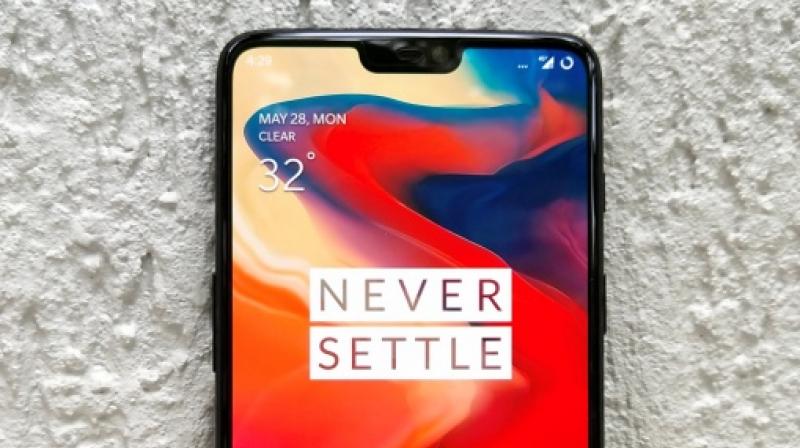
If superfast performance is your only smartphone business, then OnePlus is the only name that probably comes to mind. OnePlus is the only smartphone brand that promises the best performance with the latest processors and no unwanted software gimmicks. Their motto has always been 'Never Settle,' which means sheer performance.
November 2017 greeted us to the OnePlus 5T, and we found out it to be one of the few Android smartphones that valued fast day-to-day performance under most circumstances, reiterating their brand philosophy of ‘Never Settle’. Since OnePlus follows that philosophy for their product lifecycle, they keep polishing their flagships models every six months with a new beast every year. Now, the OnePlus 6 has been unleased from their stable, pronouncing a new contender in the performance arena.
No, we are not saying that the OnePlus 6 is the best phone to date. It does lack the "features" that rivals offer, but promises to offer the best in the performance segment. Hence, the OnePlus cuts down on unwanted features and only concentrates on raw performance, and makes phones that can be affordable to almost everyone.
Similar to their previous offerings, the OnePlus 6 is essentially a substantial upgrade of the previous model. It rocks a flagship Qualcomm chipset with a copious amount of RAM and storage. And again, it continues to bear a higher price tag than before — the OP6 starts at Rs 34,999 for the base 6GB/64GB variant and goes up to a whopping Rs 44,999 for the Avengers special edition with 256GB of storage and 8GB of RAM. However, unlike its predecessors, it ditches the all-metal back for the first time and goes for a sexy glass-metal combo. Tempted? So were we.
Also read: OnePlus 5T review
Design, Build:
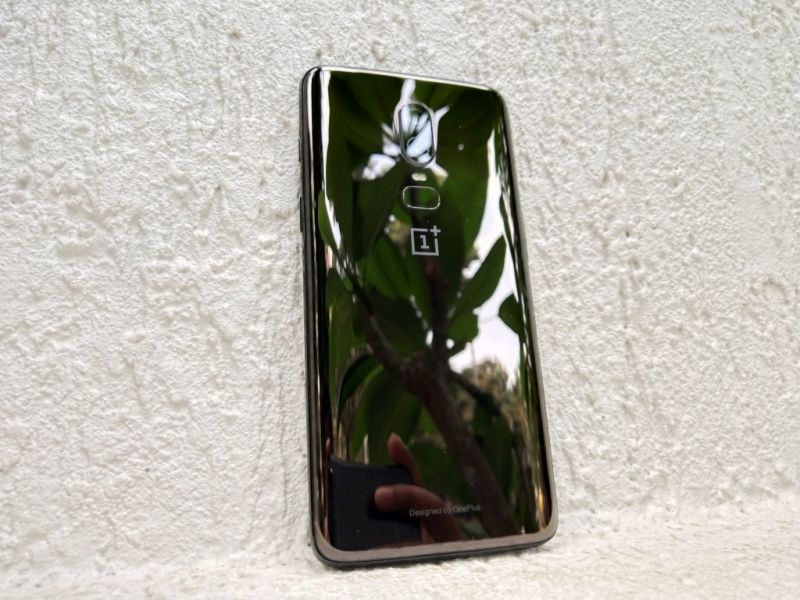
If there has ever been a mainstream OnePlus that has gone through a massive overhaul since the OnePlus 3, it has to be the OnePlus 6. The folks at OnePlus have been hard at work, aiming for a design that will appeal to wider audience. Therefore, gone is the good old matte-finished metal from the rear and in its place rests a glossy and seductive curved glass panel. The shift to glass makes this OnePlus one of those few smartphones that appeal to your heart rather than to the mind. Sony, Samsung and Apple bear it, and now OnePlus has adopted the same.
Yes, you do have a point that 'glass is glass' and will definitely be susceptible to damage in the event of a drop. Fear not, it sports a Gorilla Glass 5 panel which is better than a regular toughened glass. And, when the big guns of the industry are embracing glass bodies for their flagships, what’s the harm with OnePlus heading the same direction? However, unlike the toys from the big guns, the glass panel here is only there for the purpose of aesthetics — no ulterior motive of slotting in wireless charging underneath. OnePlus defends itself with a statement that wireless charging is not as fast as their 'Dash charge' and one cannot use the phone while being placed on the wireless charging pad. While this can be termed as true, it also helps slim down the phone while keeping the costs low too. Lastly, the glass-metal-glass sandwich has been carefully sealed to make it weather resistant and should hold up well for daily water resistance.

Look at the design once again and you will find some resemblance to Samsung’s Galaxy S9+. The new symmetrical position for the rear camera and the rectangular fingerprint scanner made sure nobody points fingers at them for being inspired by other known flagships. (Apple's famous camera bump / past similarity between the OPPO R flagships). The frame also adorns a glossy finish to match the rear panel and make it look like an all-glass body.
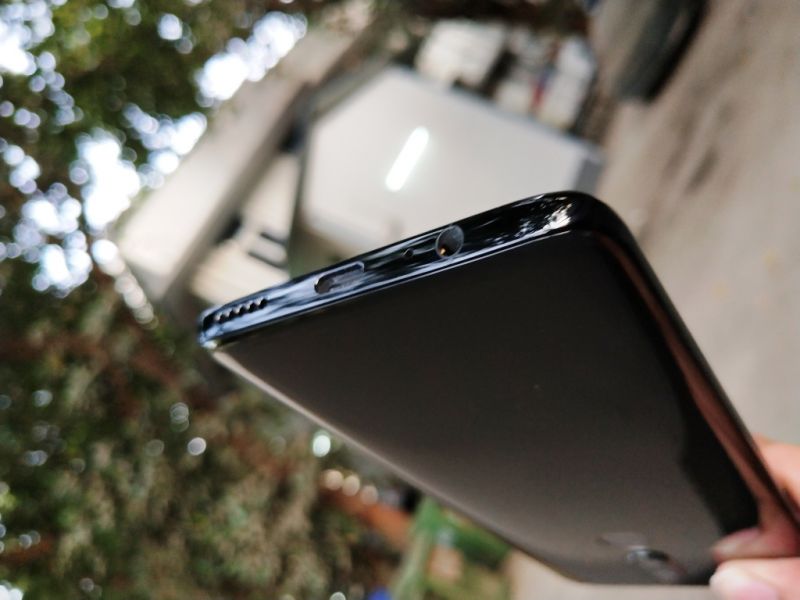
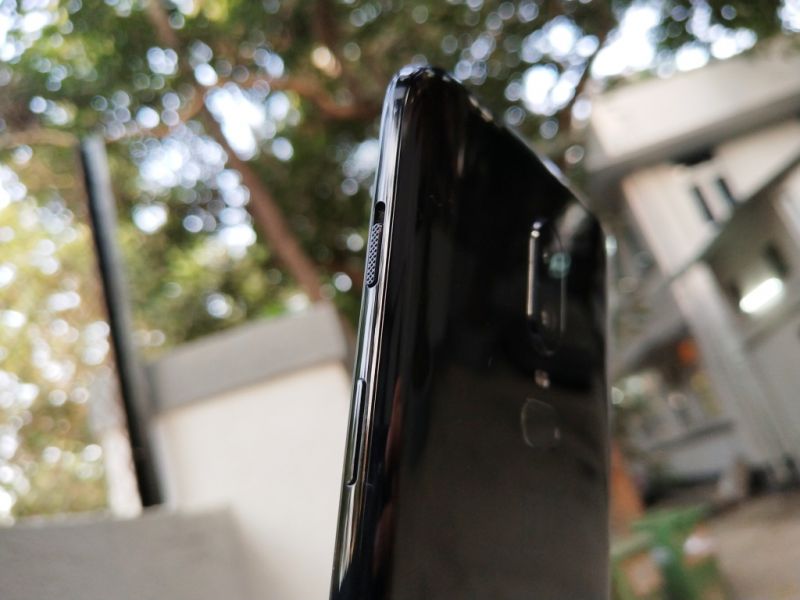
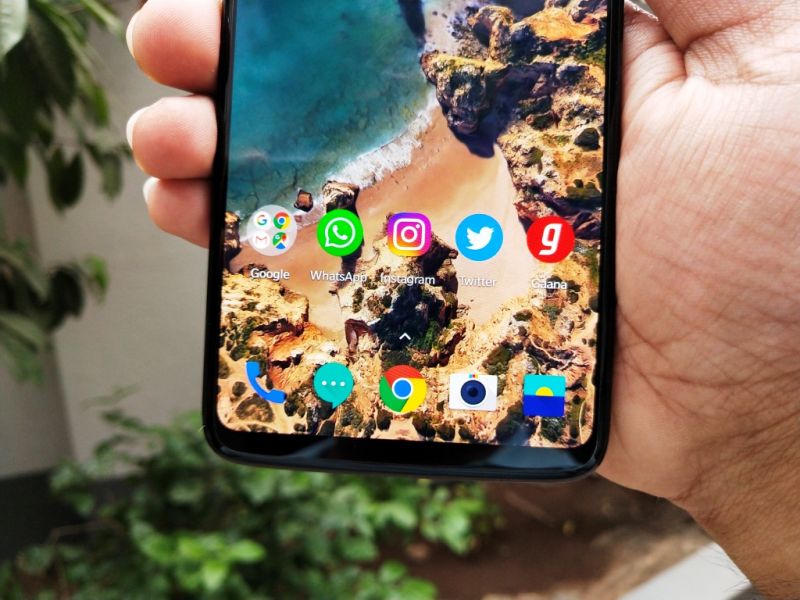
And yes, there’s a 3.5mm dedicated headphone jack residing beside the speaker and the USB-C port — God still exists for tech nerds. The Alert Slider is relocated to the left this time, which we found to make no difference at all to its ergonomics — it still requires two hands for operation at most times.
Flip it face forward and the first thing that you will notice is the highly debated notch. OnePlus has adopted the current display trend and tucked the front camera, and sensors in the small notch area, liberating space around it for pushing the UI elements further upwards. We don’t have an issue with the notch — it surely looks weird initially, but once you get used to it, it works. The notch also gives way for a larger display and helps push the unwanted notification icons in the area around the notch.
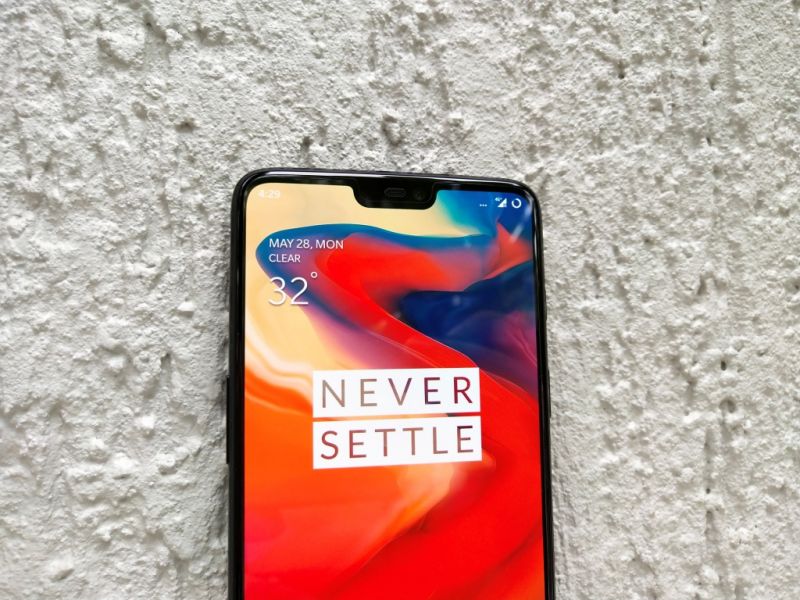
The bezels around the display have also been pushed to the extreme, making it one of the leanest narrow-bezel displays we have seen after the iPhone X. However, the Vivo X21 showed that the bezel can be even slimmer. The bottom sports a very narrow chin. It doesn’t look awkward like the one on the Huawei P20 Pro, thereby justifying the notch’s presence. Do note that OnePlus’ display is pretty similar to the existing displays on phones that carry a notch — it’s just that the geniuses at OnePlus have designed the phone in a way that hides the bulk of it. OnePlus did mention that the next version could sport an even smaller notch ahead. Presently, the Essential PH1 and the Xiaomi Mi Mix have the most differentiated display types out there.
If you don’t appreciate a glossy surface, then you can opt for the traditional OnePlus matte-finished Midnight Black variant that achieves a metal-like texture on the glass. There's also a limited edition variant with a silk white rear and gold accents on the frame and the fingerprint sensor.
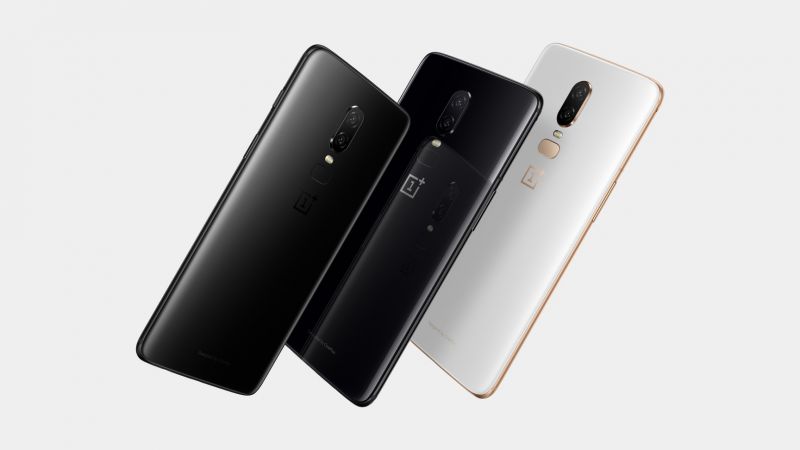
OnePlus usually unveils a special edition of their flagship offering shortly after the launch, celebrating that period's blockbuster superhero movies. Unlike the last year's 5T though, OnePlus has unveiled the special edition model with the launch of the OP6 this time. Christened as the OnePlus 6 Marvel Avengers Edition, the model gets a bump in storage and RAM (from 128GB to 256GB and 6GB to 8GB), apart from the cosmetic changes. The rear gets a faux carbon fibre finish with the Avengers logo on the bottom half. The Alert Slider also gains a gold accent. The phone comes preloaded with a special theme dedicated to the Avengers: Infinity War movie, containing new widgets and wallpapers respectively. OnePlus is also bundling an Iron Man protective bumper case worth Rs 1,490, all packed in a specially designed box. You also get something called the Infinity Medal, which you can exchange with other buyers to compete in a contest held by OnePlus.

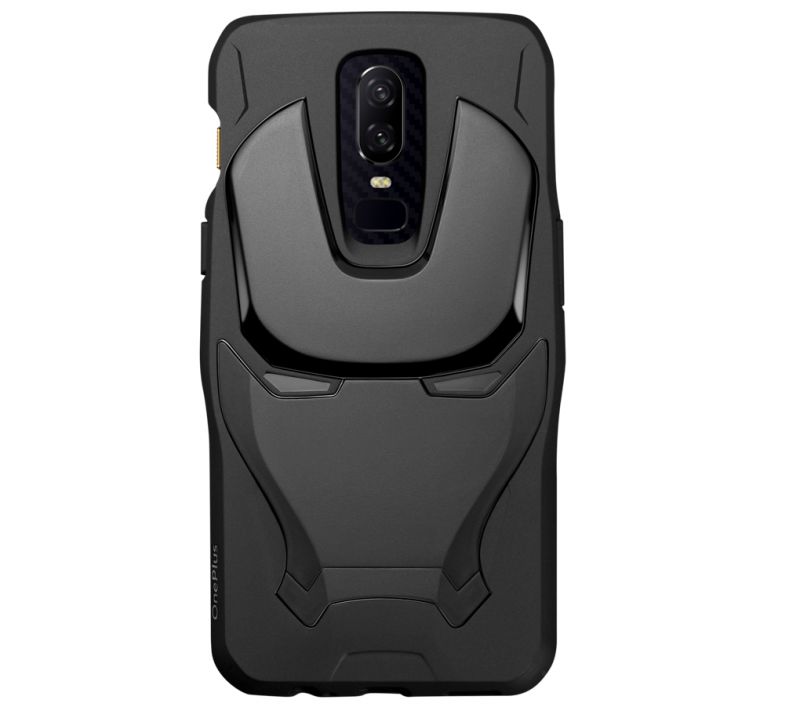

Display:
The display has been one of those areas where OnePlus hasn’t tinkered much, apart from including the notch. It’s the same Optic AMOLED panel that renders pictures at a resolution of full HD+. However, due to the notch, it now measures 6.28-inches, which enhances the display’s real estate without compromising on the phone’s overall form.

As promised by OnePlus, the notch can be hidden (from the Settings) by using software trickery. However, the phone still uses the space next to the notch for notification elements, but make the notch area prominently black. The OS also gives an option to setup how every individual app behaves with the notch — you can either have the black bars hiding the notch or go fullscreen with the notch eating up space in the window.
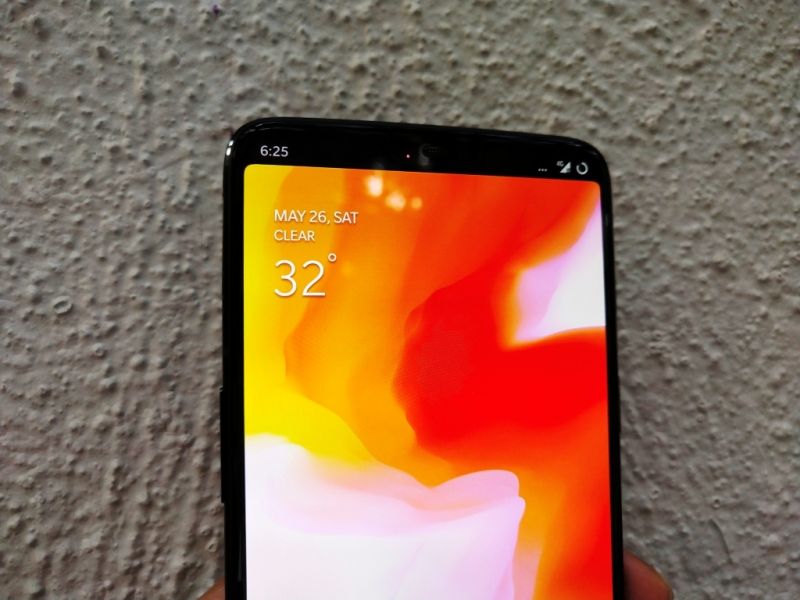
Like most AMOLED displays, there’s tons of high contrast with vibrant colours which are much closer to natural tones instead of eye-popping colour tones seen on the Samsung counterpart. Since this is a OnePlus device, you are allowed to tinker with the colour profiles in the Settings. We were expecting OnePlus to make the display HDR10 compliant with the OnePlus 6, but OnePlus must have chosen cost-cutting over choosing flagship features in this category. OnePlus has retained the fan-favourite monochromatic Reading Mode, which certainly eases eye strain while going through blogs for extended sessions.
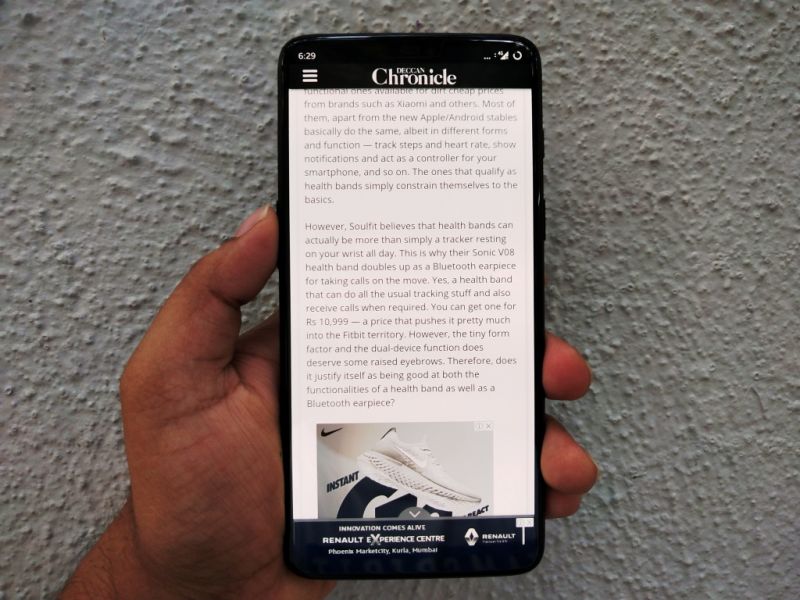
One anomaly that we noticed is asymmetrical curves on the edges. When you're watching videos or playing games, you can't ignore the fact that the curves towards the top are sharper than the ones towards the bottom when using the black bars. It looks weird since the curves on the top are rendered artificially whereas the bottom ones are dependent on the design of the hardware. Maybe a future update could even out the edges on the top while the notch is still blacked out. Apps, however, with new updates are trying their best to match up with different smartphones and their display tactics.
 The edges on the display are asymmetrical.
The edges on the display are asymmetrical.
Performance:
The last time we had a OnePlus device on our desk, we never felt that it could have done with a little more power. The 5T with its Snapdragon 835 was (and still is) blazing fast for whatever activity you might consider it for. With the OnePlus 6, things have improved. This generation upgrade now boasts of Qualcomm’s flagship Snapdragon 845 chipset, making it the first smartphone in India to feature the latest and the greatest from Qualcomm’s stable. Coupled with the usual OnePlus style of putting excess RAM and storage (the top-end model gets up to 8GB of RAM and 256GB of storage), the spec sheet can give some expensive flagships a run for their money. You also get Android 8.1.1 Oreo on board, albeit with Oxygen OS sitting on top. All of this looks like a recipe that’s bound to be lapped up well by enthusiasts.
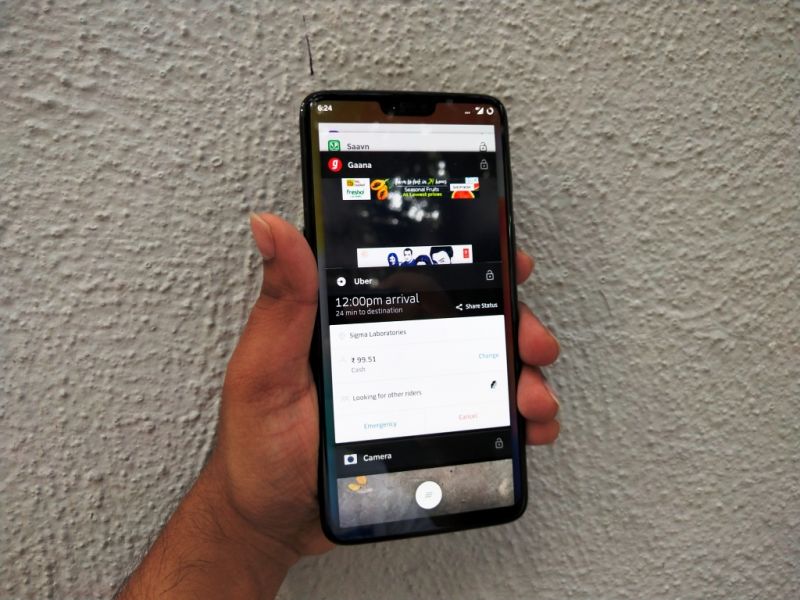
The Snapdragon 845 with 8GB of RAM on any smartphone will be a charm. However, OnePlus’ Oxygen OS knows how to extract the most out of the available hardware. The user interface is fast and zippy, with no lags or stutters noticeable to the naked eye. You tap on an app and boom — it’s there, waiting for your next input. OnePlus says that they have optimised some of the most popular apps on the PlayStore for quicker app loading times, resulting in lightning-fast reflexes. Part of the lightning fast reflex also has to do with the animations, which eventually make you feel that an activity has happened faster than you expected it to be. Heavy games are also a no-brainer, with intensive titles such as Need For Speed No Limits and PUBG working in the best of ways they can on Android.
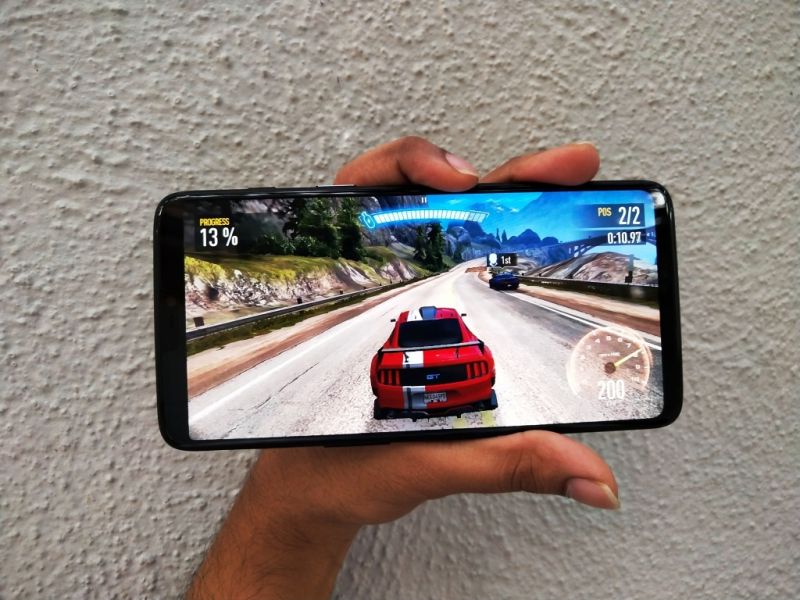
Oxygen OS has always been about appealing to geeks, who like tinkering with the OS in meaningful ways. Customisation options on Oxygen OS include changing the accent colours, tweaking the notification bar, an option to go for the all-black theme (which is outright one of the coolest features of the OS) and choosing between navigation options. Yes, Oxygen OS on the OnePlus 6 lets you retain the old three-button Android navigation or go for a gesture-based navigation. The gesture-based navigation isn’t one of the most refined ones in the market, yet it helps in liberating more usable space. All the gestures take place from the bottom of the screen — you swipe up from the extreme right to go back, swipe up and hold from the middle to view the recently opened apps and swipe up from the middle to go to Home screen. However, OnePlus should definitely work on the animations to make it more organic in nature, similar to iPhone X’s gestures.
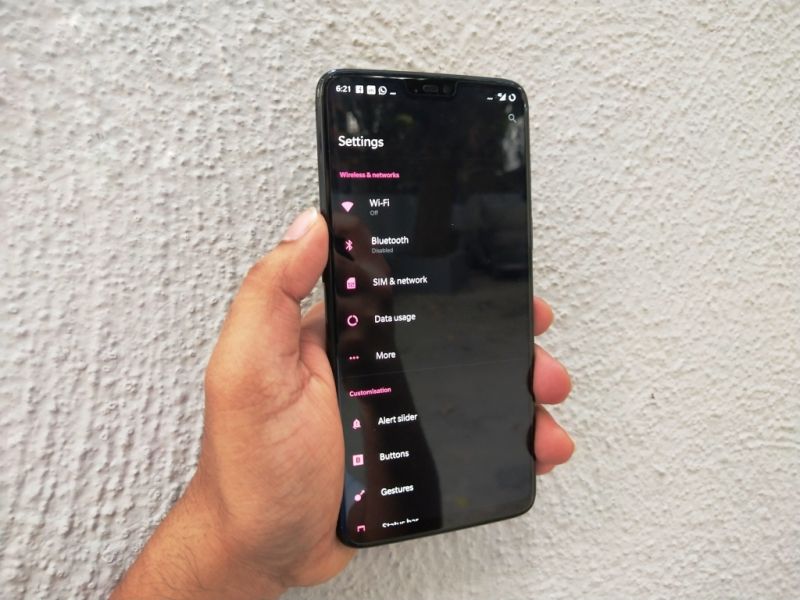
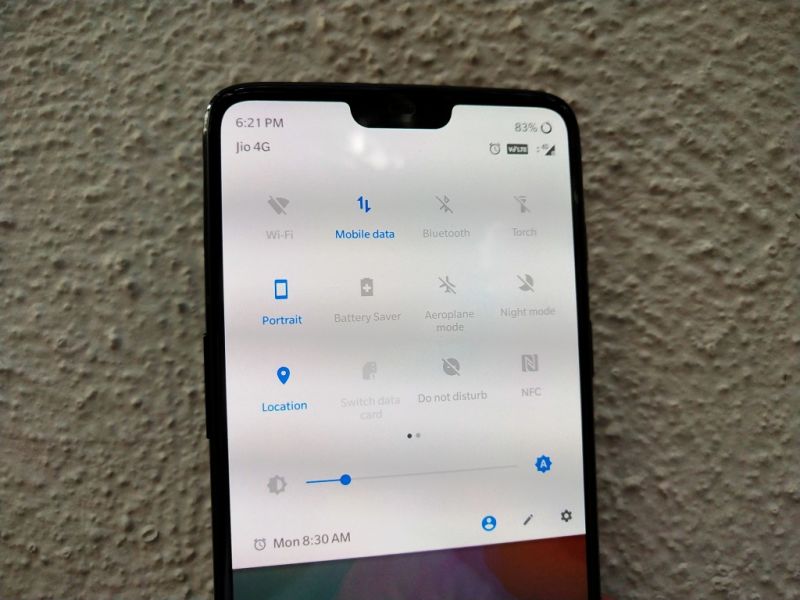
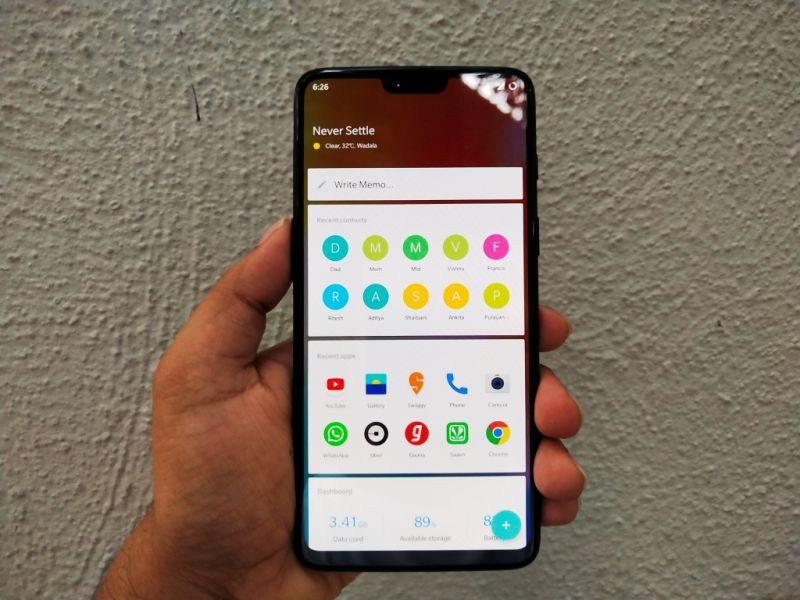
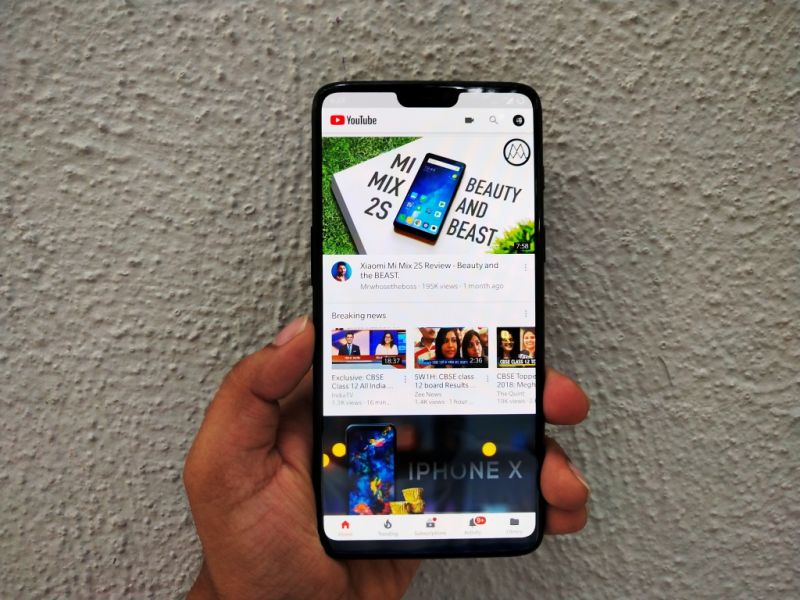
Oxygen OS on OnePlus 6 gets some value-added features. There's a new Gaming Mode that allows you to silence all notifications and turn off the auto brightness while you are playing a game. Enabling the new Earphone Mode resumes music every time you plug in your headphones. The Earphone Mode also gives users an option to let the phone notify you of the caller's name while the earphones are plugged in.
When it comes to security, the OnePlus 6 still retains the rear-mounted capacitive fingerprint sensor and the Face Unlock feature. We had already established it last year and there’s no change in the claim that OnePlus’ Face Unlock is one of the fastest facial recognition systems we have seen in the recent times. We left it enabled and seldom found us reaching for the fingerprint sensor (only when in extremely dark rooms).
Camera:
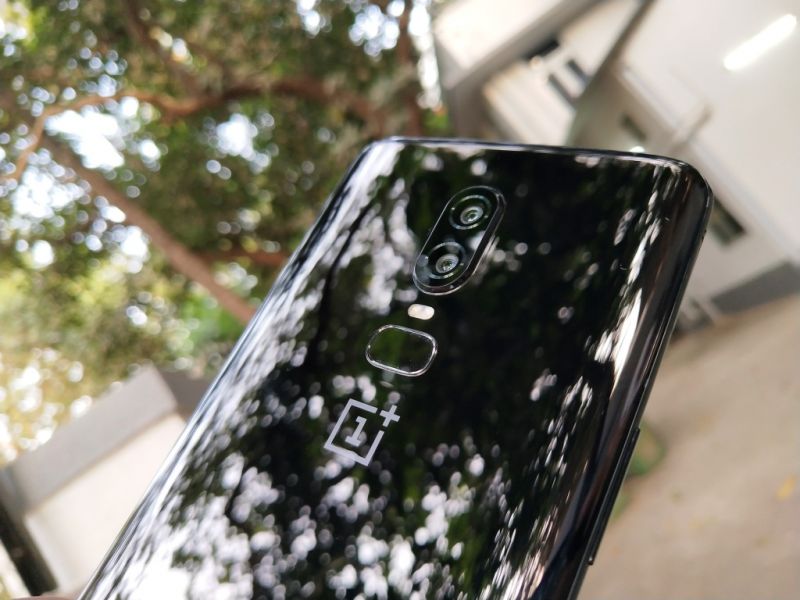
Till date, OnePlus has usually been criticised for the camera performance. The OnePlus 6, like all of its predecessors, promises to offer better photography than before. On paper though, it doesn’t seem that OnePlus has actually paid enough attention to the optics. At the rear, there’s a familiar 16MP + 20MP Sony sensor setup, both with an aperture of f/1.7, which was last seen on the 5T. The second sensor is used for capturing depth information in portrait mode and is primarily used in the low light scenarios, especially when brightness drops below a certain mark. However, the primary 16MP sensor is now assisted by OIS along with EIS. Also, the OnePlus 6 gets a slightly larger sensor than the 5T, which OnePlus claims works better in low light situations. (1/2.6-inch which is 19% larger than before at 1/1.28-inch)
In daylight, the OnePlus 6 shoots great photos. There are ample detail and colour, with appreciable contrast. Colours are managed better than before, especially the colour of the sky under direct sunlight. With a drop in light, there’s a noticeable dip in the performance, and the camera tries its best to keep noise at bay while balancing the colours. The camera captures as much light as it can, but details are noticeably lost in darker scenes, giving out an oil-paint effect. The stills may not be as good as the one taken from a Google Pixel 2, but you won’t be disappointed with the results for sure. Same can be said for the portrait mode photos, which are a sort of hit or miss in demanding situations — the distinction between the subject and background isn’t perfect when there’s a lot of details in the background.
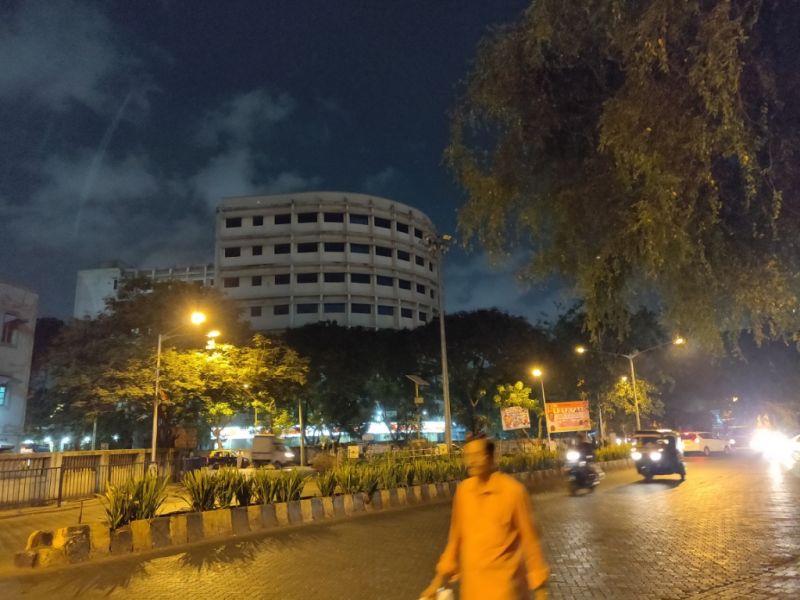
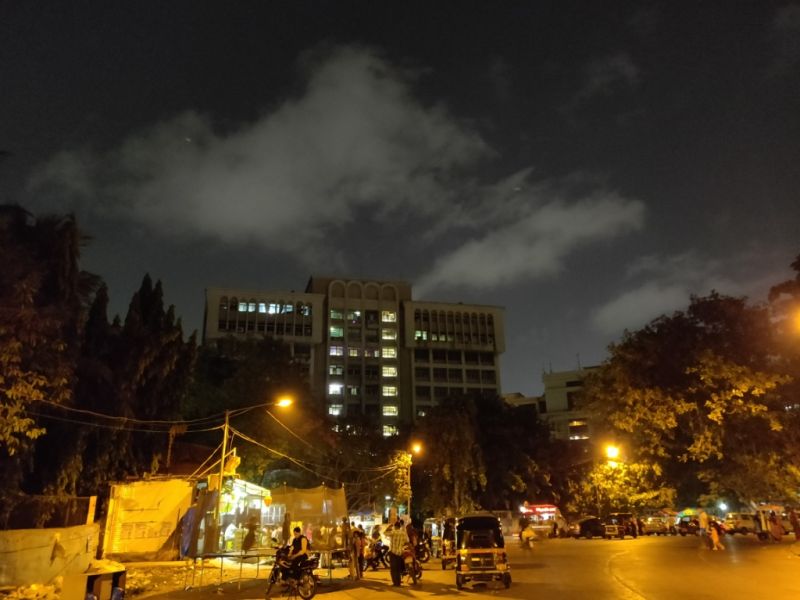
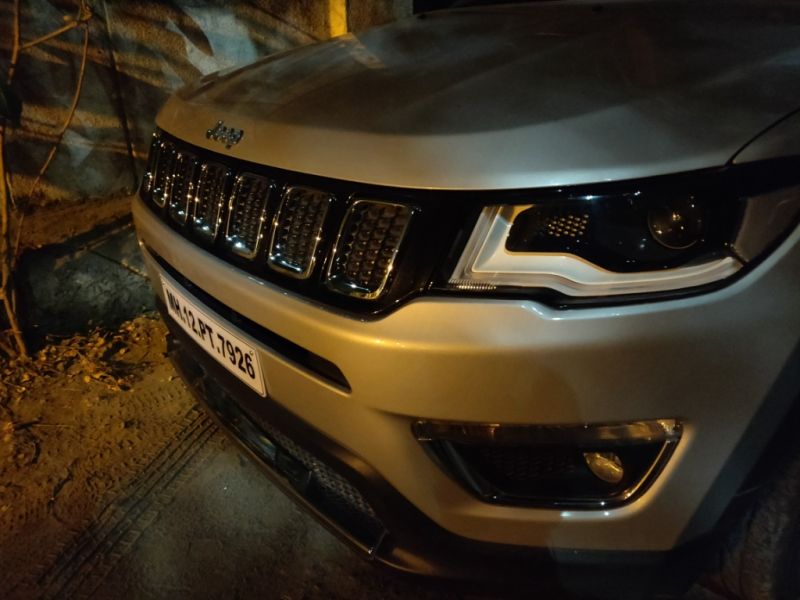


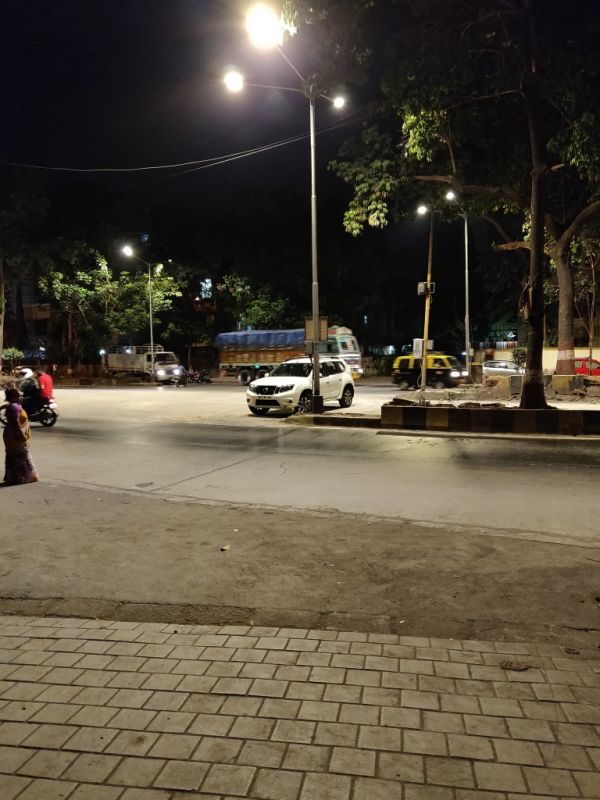 Wide angle shot
Wide angle shot
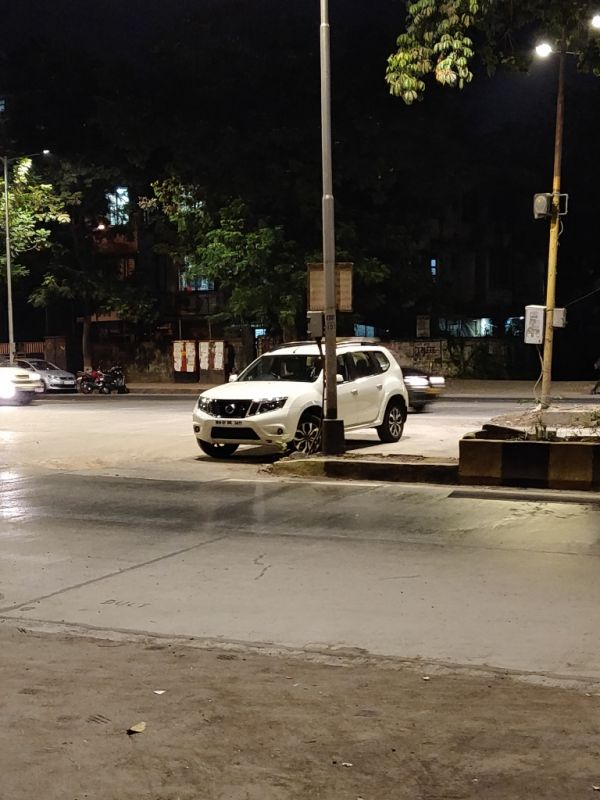 2X Zoom shot
2X Zoom shot


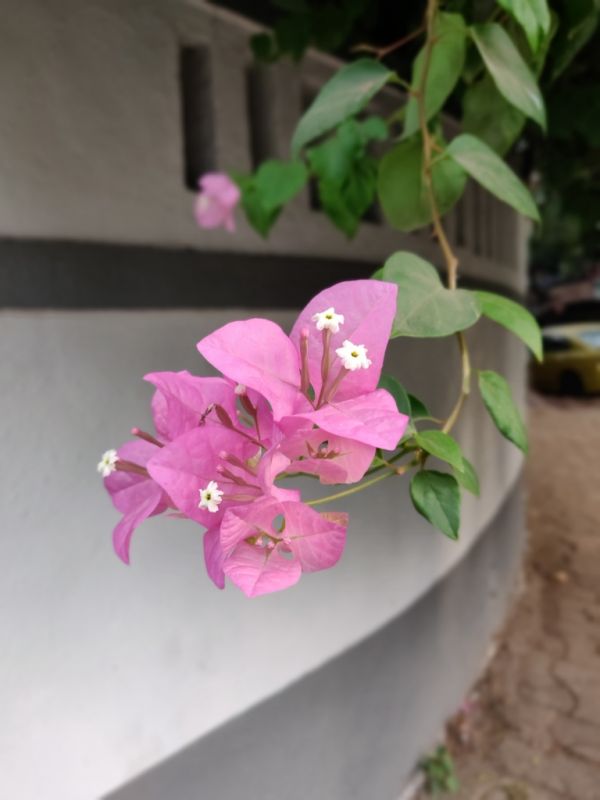
A new addition to OnePlus’ video shooting capabilities is the inclusion of slo-mo videos. You can now shoot up to 480fps at 720p, which is good enough for those obsessed with slow-motion recording. The OIS ensures that the footage is as stable as possible, without losing heavily on sharpness.
The front camera sports a 16MP Sony sensor, which takes reasonably good-looking photos with a decent balance of colours and contrast. OnePlus will roll out the ability to snap portrait selfies using AI in a future update.
Battery:
This is probably the only feature that’s retained form the previous generation model. OnePlus has carried forward the 3300mAh reservoir from the 5T, accompanied with the ultra-fast Dash Charging (now renamed as Fast Charge). Keeping in mind the power saving features of Android 8.1 Oreo, the OnePlus 6 does a reasonably good job of surviving through a whole day without a refill. We managed to put on a total screen-on time of five hours, along with incessant texting, multiple short sessions of multiplayer gaming, photographing and substantial music streaming — the battery indicator showed around 40 per cent left by the time we retired for the day. And with Fast (Dash) Charging, you can top it up within an hour flat. However, if you are someone who’s always on the move, we suggest you carry a power bank if you are a heavy user.

Conclusion: Is the OnePlus 6 worth it?
Throughout the review we kept comparing the OnePlus 6 to its predecessors — that’s because the OP6 is actually a substantial upgrade to last year’s 5T instead of being a completely new model. If you are a casual user, there’s hardly any noticeable improvement on the performance side, considering the OnePlus 5T is still lightning fast with its last-gen internals. The cameras are almost on par with the 5T’s performance, still leaving a scope for improvement. Therefore, if you are already on the OnePlus 5 or 5T, there’s no dire need for an upgrade.
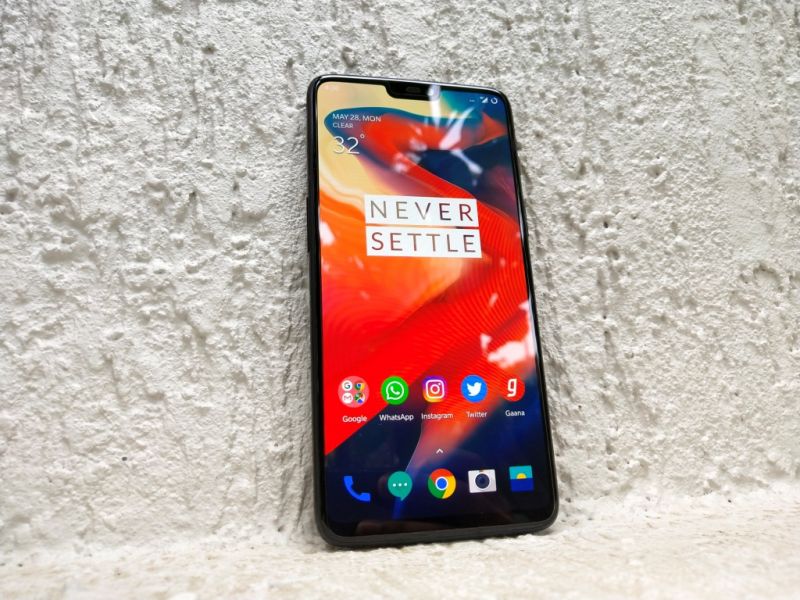
However, OnePlus has worked hard on the aesthetics this time, putting it right up with Samsung’s Galaxy S9 and the iPhone X when it comes to desirability (especially if you consider the Mirror Black variant). The phone feels exquisite while providing an assurance that when required, it can pick up its fancy clothing and dash to get the work done without leaving the user wanting more.
On a broader note, OnePlus has finally made a smartphone that appeals to the geeks and casual users alike. It hits the sweet spot that a premium smartphone seeker looks for — the right amount of aesthetic desirability with non-compromising everyday performance. It ensures blisteringly fast performance with its clean and almost stock Android-like interface, and the Fast (Dash) Charging will make sure you aren't tethered to a socket for hours while filling up its tank. Even with its premium glass-based form factor, it’s still the most no-nonsense smartphone you can buy right now in the market. And, we won’t shy away from recommending it.
Pros: Effortless performance, appealing aesthetics, fast charging
Cons: Average camera performance, no wireless charging, a tad expensive
Price:
- 6GB/64GB = Rs 34,999
- 8GB/128GB = Rs 38,999
- 8GB/256GB Avengers Edition = Rs 44,999
Click on Deccan Chronicle Technology and Science for the latest news and reviews. Follow us on Facebook, Twitter.

